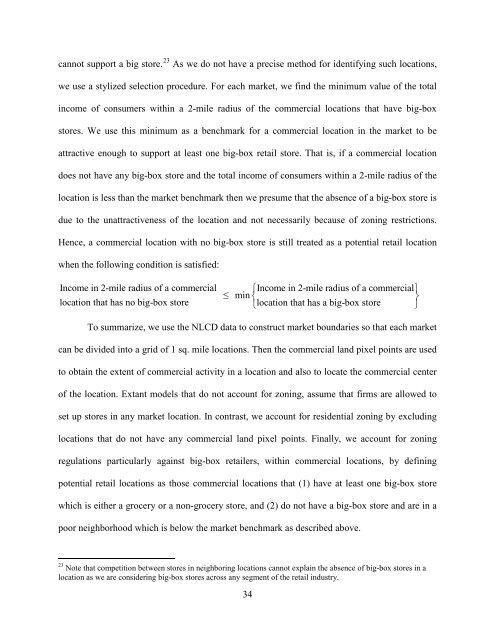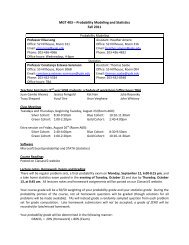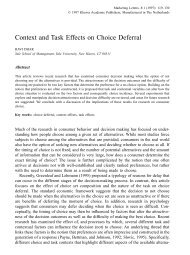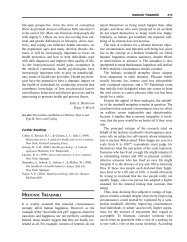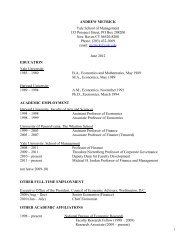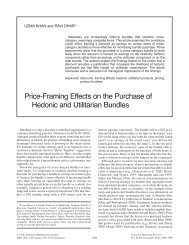The Agglomeration-Differentiation Tradeoff in ... - Yale University
The Agglomeration-Differentiation Tradeoff in ... - Yale University
The Agglomeration-Differentiation Tradeoff in ... - Yale University
Create successful ePaper yourself
Turn your PDF publications into a flip-book with our unique Google optimized e-Paper software.
cannot support a big store. 23<br />
As we do not have a precise method for identify<strong>in</strong>g such locations,<br />
we use a stylized selection procedure. For each market, we f<strong>in</strong>d the m<strong>in</strong>imum value of the total<br />
<strong>in</strong>come of consumers with<strong>in</strong> a 2-mile radius of the commercial locations that have big-box<br />
stores. We use this m<strong>in</strong>imum as a benchmark for a commercial location <strong>in</strong> the market to be<br />
attractive enough to support at least one big-box retail store. That is, if a commercial location<br />
does not have any big-box store and the total <strong>in</strong>come of consumers with<strong>in</strong> a 2-mile radius of the<br />
location is less than the market benchmark then we presume that the absence of a big-box store is<br />
due to the unattractiveness of the location and not necessarily because of zon<strong>in</strong>g restrictions.<br />
Hence, a commercial location with no big-box store is still treated as a potential retail location<br />
when the follow<strong>in</strong>g condition is satisfied:<br />
Income <strong>in</strong> 2-mile radius of a commercial<br />
location that has no big-box store<br />
≤<br />
⎧Income <strong>in</strong> 2-mile radius of a commercial⎫<br />
m<strong>in</strong> ⎨ ⎬<br />
⎩location that has a big-box store ⎭<br />
To summarize, we use the NLCD data to construct market boundaries so that each market<br />
can be divided <strong>in</strong>to a grid of 1 sq. mile locations. <strong>The</strong>n the commercial land pixel po<strong>in</strong>ts are used<br />
to obta<strong>in</strong> the extent of commercial activity <strong>in</strong> a location and also to locate the commercial center<br />
of the location. Extant models that do not account for zon<strong>in</strong>g, assume that firms are allowed to<br />
set up stores <strong>in</strong> any market location. In contrast, we account for residential zon<strong>in</strong>g by exclud<strong>in</strong>g<br />
locations that do not have any commercial land pixel po<strong>in</strong>ts. F<strong>in</strong>ally, we account for zon<strong>in</strong>g<br />
regulations particularly aga<strong>in</strong>st big-box retailers, with<strong>in</strong> commercial locations, by def<strong>in</strong><strong>in</strong>g<br />
potential retail locations as those commercial locations that (1) have at least one big-box store<br />
which is either a grocery or a non-grocery store, and (2) do not have a big-box store and are <strong>in</strong> a<br />
poor neighborhood which is below the market benchmark as described above.<br />
23 Note that competition between stores <strong>in</strong> neighbor<strong>in</strong>g locations cannot expla<strong>in</strong> the absence of big-box stores <strong>in</strong> a<br />
location as we are consider<strong>in</strong>g big-box stores across any segment of the retail <strong>in</strong>dustry.<br />
34


